Complete Solutions to Level 2 of chapter CHEMICAL KINETICS AND EQUILIBRIUM of Class 10 book with complete answers and questions
| Class 10 | CHEMISTRY |
| Chapter | CHEMICAL KINETICS AND EQUILIBRIUM |
| PEARSON IIT JEE FOUNDATION | Level 2 |
| Number Of Questions | 22 |
| Academic Year | 2023-24 |
Nitrogen dioxide gas dissociates to give nitric oxide and oxygen. For this reaction, when a graph is ploted between concentration of `NO_(2)` and time, the slope of tangent drawn at time t=10 s is found to be `6.8xx 10^(-4)` mol `L^(-1) s^(-1)` .predict the slope of the graph at t=10s when the concentration of NO and `O_(2)` are plotted against time. Justify your answer.
View SolutionBased on the following curves predict in which case the rate of reaction would be more and justify ?
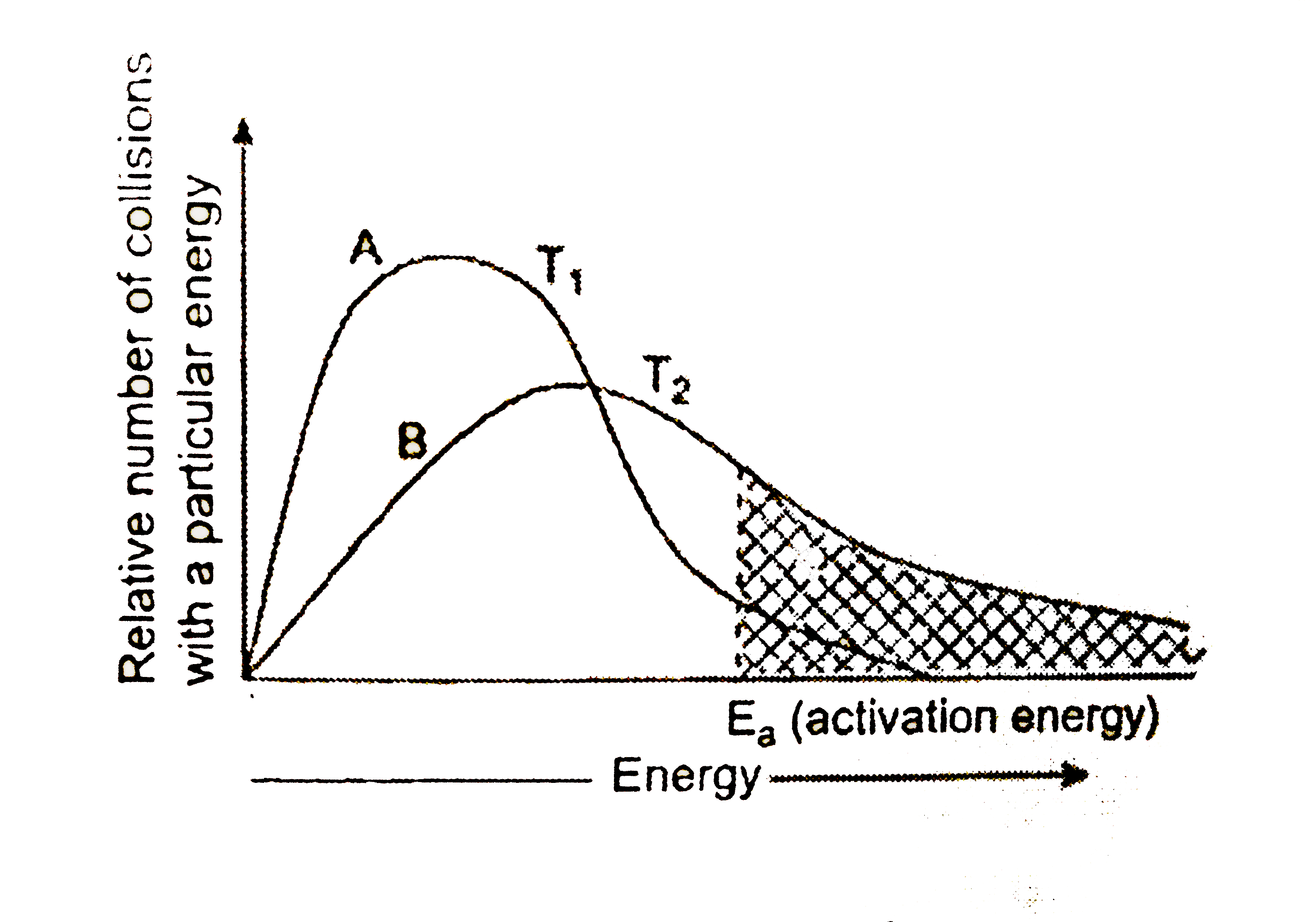
View SolutionHydrogen peroxide decomposes into water and oxygen. The uncatalysed reaction has activation energy of 86 KJ/mol . The `E_(a)` value in the presence of acetanilide is 112 KJ/mol and in the presence of `MnO_(2)` it is 49 KJ/mol. What conclusion can you draw from the above observations ?
View SolutionIn the decomposition , `2N_(2)O_(5) hArr 4NO_(2) + O_(2)` oxygen gas is produced at the average rate of `9.1 xx 10^(-4)` mol `L^(-1) s^(-1)` . Over the same period what is the average rate of production of `NO_(2)` and loss of `N_(2)O_(5)`
View SolutionEnergy profile diagram for a reversible chemical reaction is given . On the basis of the given diagram , explain the effect of temperature on the equilibrium
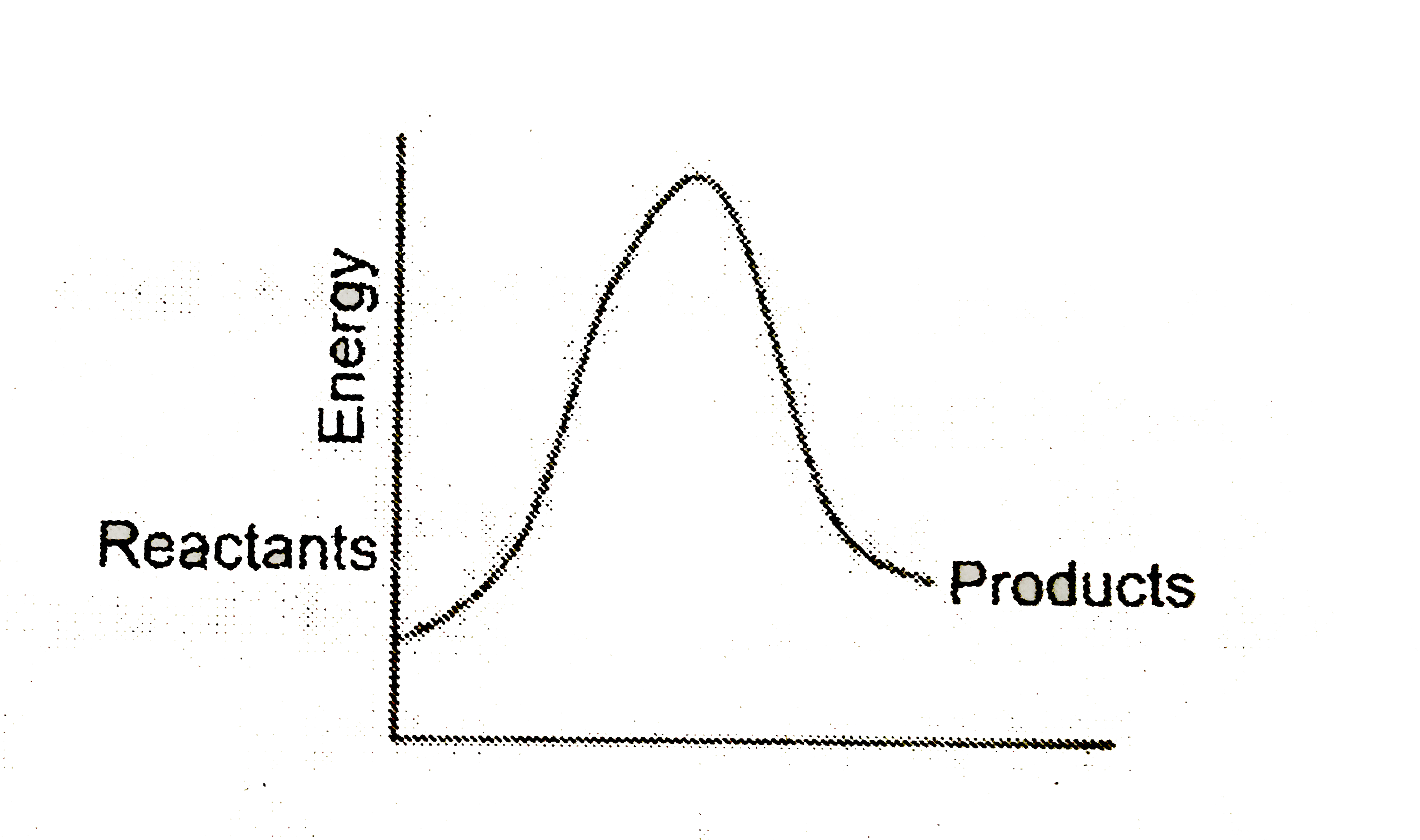
View SolutionFor a reversible reaction, the activation energy of a forward reaction is 85 KJ/mol . The net reaction is assoicated with the release of 15 KJ/mol . What is the activation energy of the backward reaction ? Explain it on the bais of the collision theory ?
View SolutionOn what factors do the equilibrium position and equilibrium constant depend ? Explain by giving appropriate reasons .
View SolutionIn a gas phase reaction , the decomposition of `PCl_(3)` takes place at `273^(@)C` and 1 atmosphere pressure. It percentage degree of dissociation is 40 per cent . Assuming that all gases in the reaction behave ideally, calculate the density of the equilibrium mixture. [atomic weight of phosphorus =3 and chlorine=35.5]
View SolutionCarbon monoxide and water vapor react to give `Co_(2)` and `H_(2)` in a vessel of 2 L capacity at 1090 K . Equilibrium is established and the number of moles of various components is found to be 0.8,0.6,0.4 and 1.2 mol , respectively. Calculate `K_(c)` value. 1.2 mol by increasing the concentration of `CO_(2)` at the equilibrium , find the number of moles of `CO_(2)` to be added to the reaction mixture at the same temperature.
View SolutionFor a gas phase reaction `Cl_(2) + CHCl_(3) to HCl+ "CC"l_(4)`, the rate law is given as `r=k[Cl_(2)]^(1//2) [CHCl_(3)]` . Explain how the rate of reaction varies when the concentration of chlorine is doubled . Give units of rate constant
View Solution`BrO_(3)^(-) + 5Br^(-) + 6H^(+) to 3Br_(2) + 3H_(2)O`
The order of reaction with respect to `BrO_(3)^(-)` is `2` and with respect to other reactants is one. Complete the following table.

View SolutionA reaction takes place in two steps. The rates of the two elementary steps are given. On the basis of these, predict the rate of reaction with changes in concentration. Also the given units of rate constant are
`2A_((g)) + B_(2(g)) to 2AB_((g)) to `Overall reaction
`A + B_(2) to AB+B` in the first step, r`=3.2xx10^(4)` mol `L^(-1) s^(-1)`
`B + A to AB`, in the second step , `r=1.9xx10^(6) ` mol `L^(-1)s^(-1)`
View SolutionA chemist was studying the reaction of type `2A_((g))+2B_((g)) +C_((g)) = 2D_((g))` experimentally . He found out that the order of the reaction is 2. Complete the following table based on the experimental results given by him.
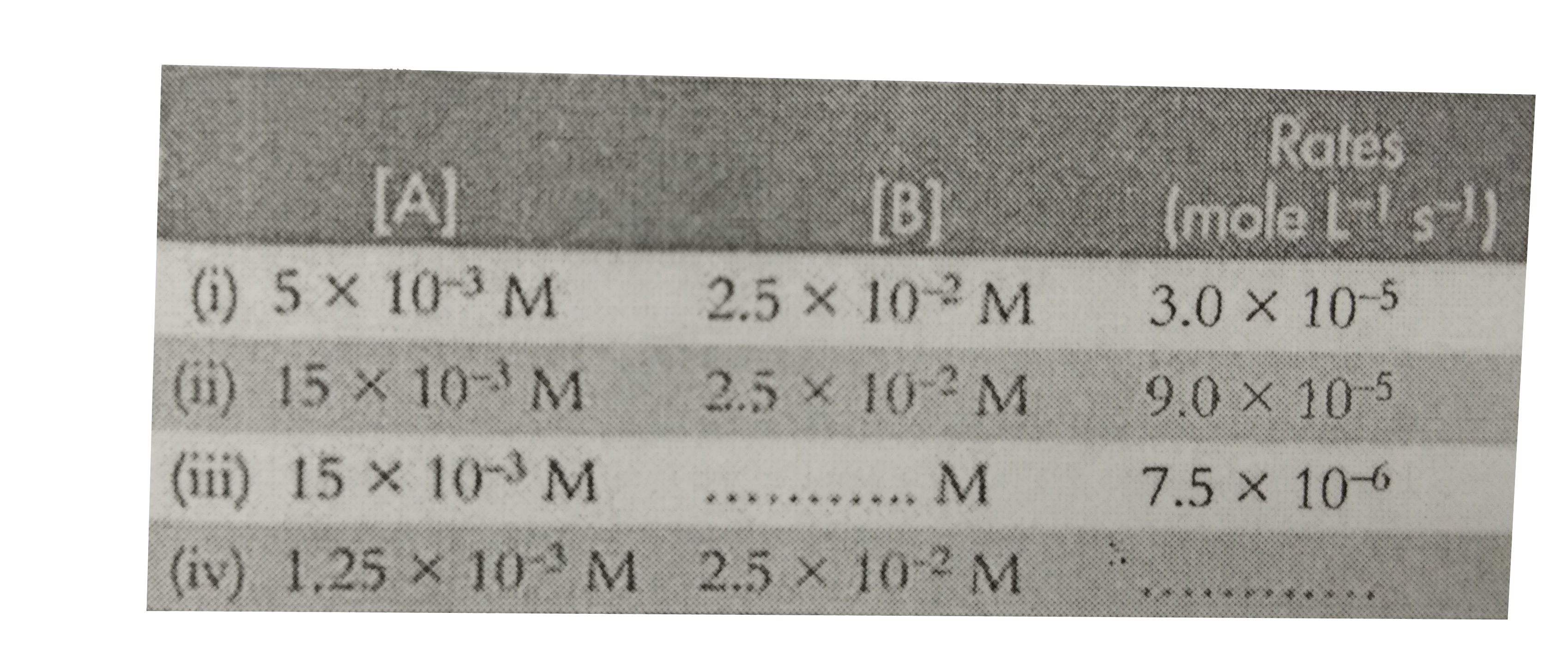
View SolutionEnergy profile diagrams for hypothetical reaction `2A_((g)) + B_((g)) to 2D_((g)) and X_(2(g)) + Y_(2(g)) to 2XY_((g))` are given below. Predict the slow and fast steps from these two reactions. Also identify the factors that favour the formation of reactants from products. Justify.
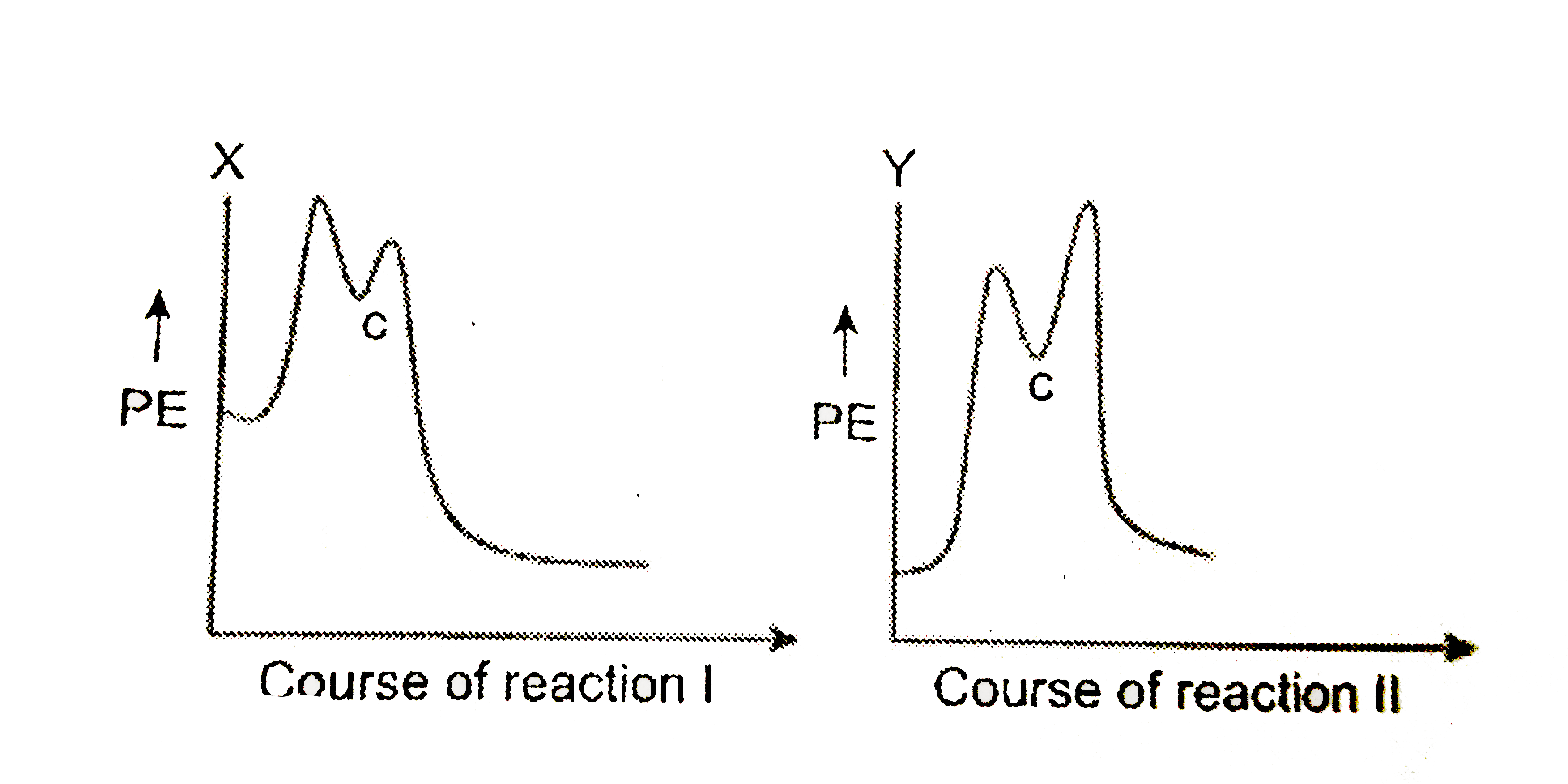
View SolutionFrom the three energy profile diagrams A,B and C, find out which of the above irreversible reactions gives maximum yield within a given period of time ? Justify. [Consider that the initial concentration of the reactants and temperature is same for all the reactions. ]
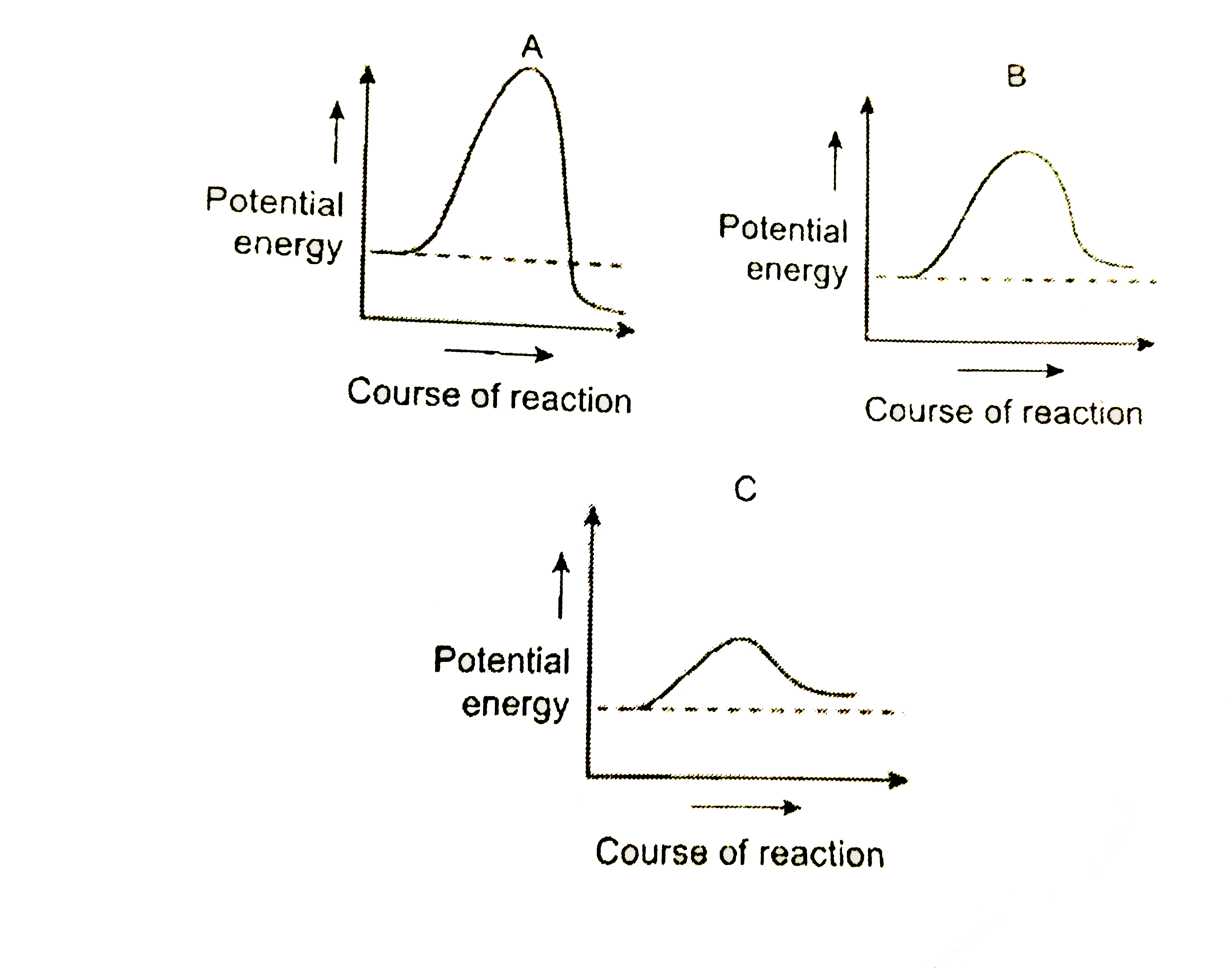
View SolutionWhy is the reaction of `SO_(2)` to `SO_(3)` not rapid ini clean and dry air ?
View SolutionChange in temperature results in change in equilibrium position . However, the addition of a catalyst results in no change in the equilibrium position . Justify.
View Solution`Ag_(2)S + 4NaCN hArr 2Na[Ag(CN)_(2)]+ Na_(2)S` . Oxidation of sodium sulphide formed is the important step in the extration of silver from its ore . Justify.
View SolutionAn absent-mined prodessie, Mr Waage, took elements A and B in a reaction vessel at room temperature, to study the reaction`A+ 2B rArr 2C +D.` He took the concentration of B as 1.5 times the concentration of A. After the reaction reached equilbrium, he round that the concentrations of A and D were equal. However, he forgot to calculate `K_(c)` and removed oneof the products from the mixture. Now, can you calculate `K_(c)` for the equilibrium attained in his experiment and help him out ?
View SolutionWhen `2.82` g of solid `NH_(4)Cl` is intoroduced into a 2 L flask at `30^(@)C.` 40 per cent of the solid `NH_(4)Cl` decomposes into two gaseous products, that is `NH_(3)` and HCl. Calculate the Kc. What would happen if more amount of `NH_(4)Cl` is introduced into the flask ?
View Solution`0.5` moles of CO thken in a 2 L flask is maintained at 750 k in the presence of a catalyst so that the following reaction can take place: `CO+2H_(2) hArr CH_(3)OH.` When hydrogen is introduced, the pressure of the system in increased to `23.629` antm from `15.129` atm at equilibrium and `0.08` moles of gaseous product, methanol is formed. Clculate `k_(C).`
View SolutionA mixture of `0.75` mol of `N_(2) and 1.20` mol of `H_(2)` is placed in a 3 L container. When the reaction `N_(2)+3H_(2) hArr2NH_(3)` reaches the equilibrium, the concentration of `H_(2)` is 0.1 M. Calculate the concentration of `N_(2) and NH_(3)` when the reaction is carried out with double the number of moles.
View Solution
Level 2 questions and complete solutions for chapter CHEMICAL KINETICS AND EQUILIBRIUM of PEARSON IIT JEE FOUNDATION of Class 10